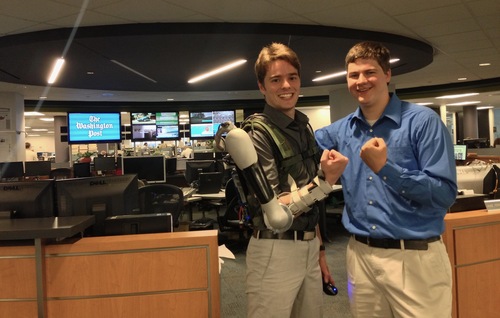Exoskeletons may no longer just be for wounded veterans and other disabled people. They may become available for everyone
At the University of Pennsylvania, a novel robotic device developed by engineering students could help elderly and mildly disabled patients around the home. The device is designed to fit around an individual's existing arm and can help an individual carry up to 18 kg, according to The Associated Press.

Anyone who has ever had a big, old tree cut down in their backyard knows it can be tough to move the logs around. Or how about lugging an old freezer out to the street curb? Wouldn't it be neat to show off an exoskeleton arm to the neighbors?
The upper-body untethered exoskeleton doesn't carry many of the bells and whistles found on other exoskeletons. For the most part, the device comprises a battery-containing backpack and a motorized arm brace. However, the cost-effective design was able to net its designers $75,000 in awards.
"They built something that people can relate to," notes Robert Carpick, chairperson of the mechanical engineering department at the university. "And of course it appeals clearly to what we've all seen in so many science fiction movies of superhuman strength being endowed by an exoskeleton."
Existing exoskeletons are sometimes used to help paralyzed people walk. However, these exoskeleton systems contain accelerometers, motion stabilizers and complex electronic circuitry to guide movement. In addition to more complex electronics, these devices can carry a price tag in the six-figure range. In comparison, the Titan Arm carries a price tag of $2000 and has an estimated final build weight of 8 kg.





